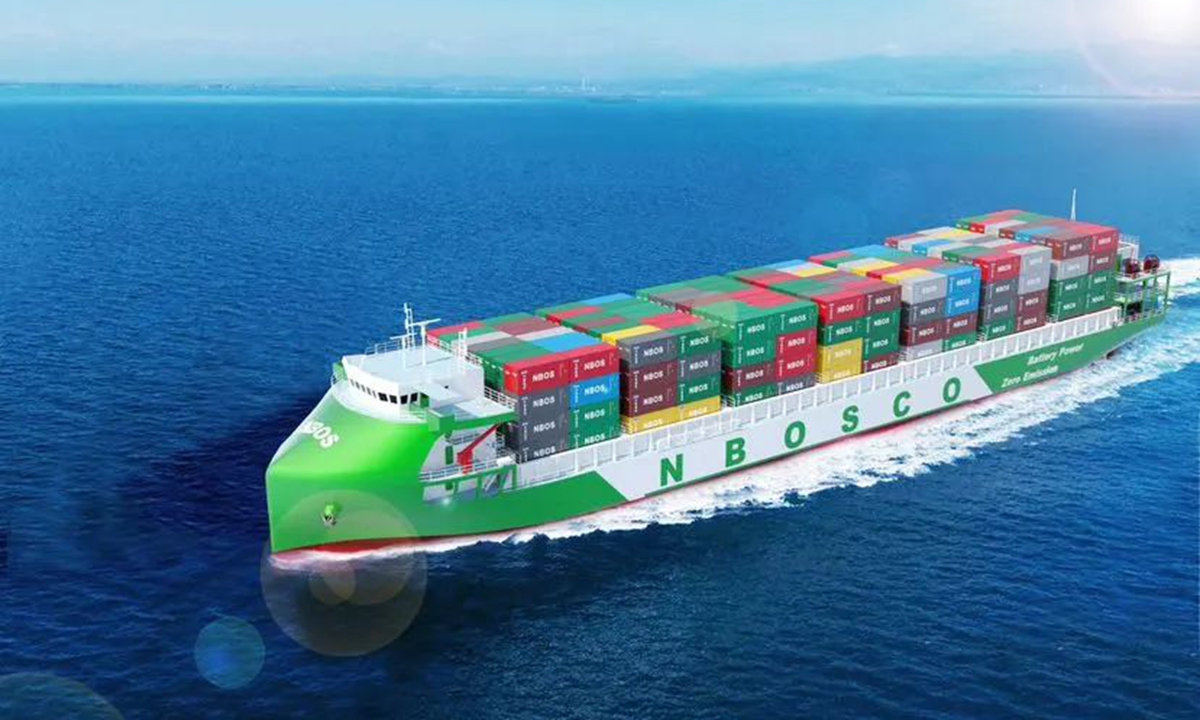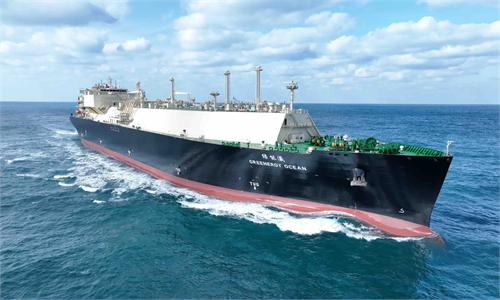
The concept picture of the electric vessel Photo: Screenshot
China's first domestically developed and the world's largest electric container vessel received two design and building contracts, Shanghai's Pudong New Area regional government said. It marked a milestone of China's progress toward achieving "dual carbon" goals in the maritime shipping sector.
The electric vessel is driven by two permanent magnet propulsion motors with a capacity of 875 kilowatts, and a maximum speed of 11.5 knots. A total of ten box battery cells with total capacity of about 19,000 kilowatt-hours provide power for two motors.
The electric vessel has a length of 127.8 meters and a width of 21.6 meters. It can load 740 standard containers - twenty-foot equivalent units - with total capacity of over 9,000 tons. Its unique design reduces time for freight upload and unload.
The electric vessel is designed by Shanghai Merchant Ship Design & Research Institute under the China State Shipbuilding Corporation.
The contract was made with Ningbo Ocean Shipping Co, with the two vessels to be built by Jiangxi Jiangxin Shipbuilding Co.
The signing of the contract is being viewed as a positive sign that shipping along China's coastal regions will enter an era of zero emissions and electrification, the report noted.
Guided by country's goals of achieving "carbon emissions peak" and "carbon neutrality," China's shipping industry has ramped up green transition by deploying more new-energy vessels.
A 10,000-ton-level electric container vessel developed and built by China COSCO Shipping Corporation was delivered in last December. The operation of the vessel can reduce CO2 emissions by 2,918 tons annually, equivalent for planting 160,000 trees, according to media reports.
China's first hydrogen battery-powered vessel was deployed in Yichang, Central China's Hubei Province, which can save 103.16 tons of gasoline, and reduce 343.67 tons of CO2 emissions each year.
Global Times



